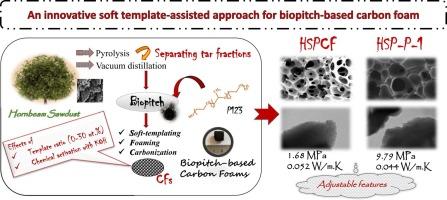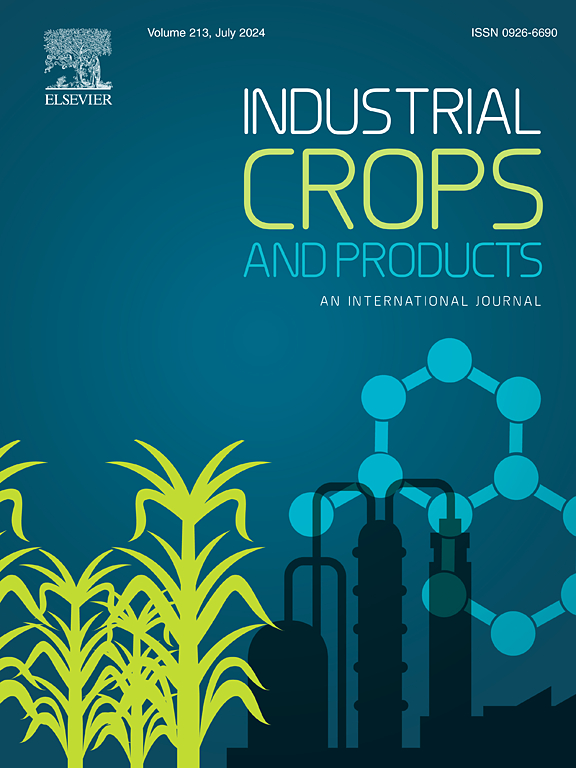The soft template-assisted foaming technique’s impact on biopitch-based porous carbon foam features
IF 5.6
1区 农林科学
Q1 AGRICULTURAL ENGINEERING
引用次数: 0
Abstract
Thermoplastic features, high carbon content, low ash level, and abundant phenolic chemical content of biopitch have made it a suitable precursor for carbonaceous materials. The present study aimed to investigate the utilization of a previously untested soft template-assisted foaming technique in the fabrication of biopitch-based carbon foam that provided brightness to the research in the literature. The hornbeam sawdust pitch-based carbon foams were formed by incorporating the non-ionic surfactant P123 into the synthesis solution. The research focused on understanding the effects of the foaming technique (conventional or template-assisted), template ratio, and chemical activation on the foam’s physical, chemical, and mechanical properties via several analytical and characterization test methods. Raman spectroscopy, scanning and transmission electron microscopy analyses were performed to characterize the pore structures and carbon hybridization types, deducing highly aligned graphitic-like structures. Moreover, the mechanical strength of carbon foam was also enhanced via soft-template addition before foaming and diminished after chemical activation. The highest mechanical strength of 9.79 MPa with suitable thermal conductivity of 0.044 W/m.K and the lowest porosity of 71.41 % were attained when the template amount was 1 wt%. Surface areas of activated carbon foams ranged from 92.3 to 1121.2 m2/g. Accordingly, the adjustable pore structures of the developed materials allowed them to be considered promising adsorbents according to the need to remove pollutants of different sizes. The results obtained from the study will provide valuable insights into the effectiveness of the soft template-assisted foaming technique in high-quality and hierarchically arranged graphitic carbon foam production and its potential applications in thermal insulation.


软模板辅助发泡技术对生物痒基多孔碳泡沫特性的影响
生物沥青的热塑性特点、高含碳量、低灰分和丰富的酚类化学成分使其成为碳质材料的合适前体。本研究旨在探讨如何利用一种之前未曾试验过的软模板辅助发泡技术来制造生物沥青基碳泡沫,这为文献研究提供了新的亮点。通过在合成溶液中加入非离子表面活性剂 P123,形成了以角闪树锯末沥青为基础的碳泡沫。研究重点是通过几种分析和表征测试方法,了解发泡技术(传统或模板辅助)、模板比例和化学活化对泡沫物理、化学和机械性能的影响。通过拉曼光谱、扫描电子显微镜和透射电子显微镜分析,对孔隙结构和碳杂化类型进行了表征,推断出高度排列的类石墨结构。此外,通过在发泡前添加软模板,还提高了碳泡沫的机械强度,而在化学活化后则降低了机械强度。当模板量为 1 wt% 时,机械强度最高,为 9.79 MPa,导热系数为 0.044 W/m.K,孔隙率最低,为 71.41 %。活性炭泡沫的表面积在 92.3 至 1121.2 m2/g 之间。因此,根据去除不同大小污染物的需要,所开发材料的可调孔隙结构使其被认为是有前途的吸附剂。这项研究的结果将为软模板辅助发泡技术在高质量、分层排列的石墨碳泡沫生产中的有效性及其在隔热领域的潜在应用提供有价值的见解。
本文章由计算机程序翻译,如有差异,请以英文原文为准。
求助全文
约1分钟内获得全文
求助全文
来源期刊

Industrial Crops and Products
农林科学-农业工程
CiteScore
9.50
自引率
8.50%
发文量
1518
审稿时长
43 days
期刊介绍:
Industrial Crops and Products is an International Journal publishing academic and industrial research on industrial (defined as non-food/non-feed) crops and products. Papers concern both crop-oriented and bio-based materials from crops-oriented research, and should be of interest to an international audience, hypothesis driven, and where comparisons are made statistics performed.
 求助内容:
求助内容: 应助结果提醒方式:
应助结果提醒方式:


